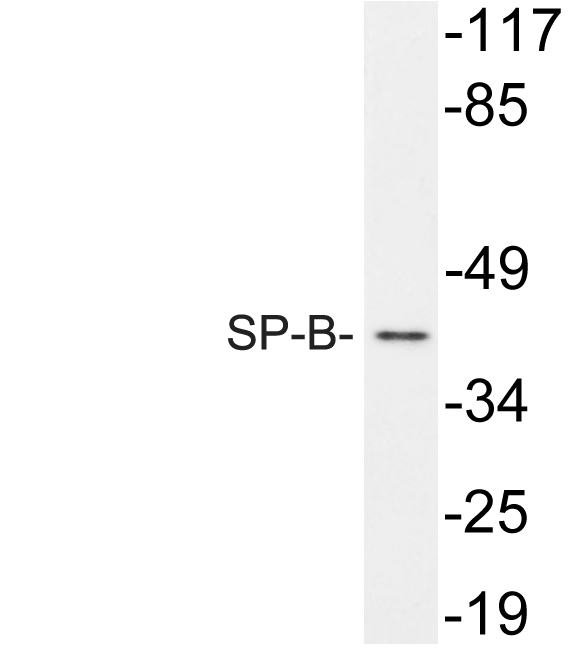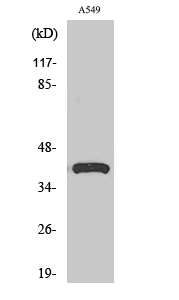产品名称
SP-B Rabbit Polyclonal Antibody
别名
SFTPB; SFTP3; Pulmonary surfactant-associated protein B; SP-B; 18 kDa pulmonary-surfactant protein; 6 kDa protein; Pulmonary surfactant-associated proteolipid SPL(Phe)
蛋白名称
Pulmonary surfactant-associated protein B
存储缓冲液
Liquid in PBS containing 50% glycerol, 0.5% BSA and 0.02% New type preservative N.
Human Gene Link
http://www.ncbi.nlm.nih.gov/sites/entrez?db=gene&term=6439
Human Swissprot No.
P07988
Human Swissprot Link
http://www.uniprot.org/uniprotkb/P07988/entry
Mouse Swissprot No.
P50405
Mouse Swissprot Link
http://www.uniprot.org/uniprot/P50405
免疫原
The antiserum was produced against synthesized peptide derived from human SP-B. AA range:243-292
特异性
SP-B Polyclonal Antibody detects endogenous levels of SP-B protein.
稀释度
WB 1:500-2000;IHC-p 1:50-300; ELISA 2000-20000
宿主
Polyclonal, Rabbit,IgG
背景介绍
This gene encodes the pulmonary-associated surfactant protein B (SPB), an amphipathic surfactant protein essential for lung function and homeostasis after birth. Pulmonary surfactant is a surface-active lipoprotein complex composed of 90% lipids and 10% proteins which include plasma proteins and apolipoproteins SPA, SPB, SPC and SPD. The surfactant is secreted by the alveolar cells of the lung and maintains the stability of pulmonary tissue by reducing the surface tension of fluids that coat the lung. The SPB enhances the rate of spreading and increases the stability of surfactant monolayers in vitro. Multiple mutations in this gene have been identified, which cause pulmonary surfactant metabolism dysfunction type 1, also called pulmonary alveolar proteinosis due to surfactant protein B deficiency, and are associated with fatal respiratory distress in the neonatal period. Alternatively spliced trans
细胞定位
Secreted, extracellular space, surface film.
功能
disease:Defects in SFTPB are the cause of pulmonary surfactant metabolism dysfunction type 1 (SMDP1) [MIM:265120]; also called pulmonary alveolar proteinosis due to surfactant protein B deficiency. Inborn errors of pulmonary surfactant metabolism are genetically heterogeneous disorders resulting in severe respiratory insufficiency or failure in full-term neonates or infants. These disorders are associated with various pathologic entities, including pulmonary alveolar proteinosis (PAP), desquamative interstitial pneumonitis (DIP), or cellular non-specific interstitial pneumonitis (NSIP).,function:Pulmonary surfactant-associated proteins promote alveolar stability by lowering the surface tension at the air-liquid interface in the peripheral air spaces. SP-B increases the collapse pressure of palmitic acid to nearly 70 millinewtons per meter.,miscellaneous:Pulmonary surfactant consists of 90% lipid and 10% protein. There are 4 surfactant-associated proteins: 2 collagenous, carbohydrate-binding glycoproteins (SP-A and SP-D) and 2 small hydrophobic proteins (SP-B and SP-C).,polymorphism:Genetic variation at position 131 may influence the association between specific alleles of SFTPA1 and respiratory distress syndrome in premature infants (RDS) [MIM:267450].,similarity:Contains 1 saposin A-type domain.,similarity:Contains 3 saposin B-type domains.,subunit:Homodimer; disulfide-linked.,
纯化
The antibody was affinity-purified from rabbit antiserum by affinity-chromatography using epitope-specific immunogen.


